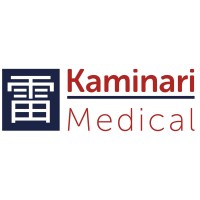
Kaminari Medical
PROBLEM Insufficient treatment of vulnerable plaque in the coronary arteries lead to costly and health impairing re-catheterizations In 2015, Coronary Artery Disease (CAD) affected 110 million people and resulted in 8.9 million deaths worldwide. CAD occurs when the arteries that supply the heart muscle with blood become hardened and narrowed, due to the buildup of cholesterol and plaque on their inner walls. Current treatment: To open the blocked coronary arteries, 80% of the patients are treated using a Percutaneous Coronary Intervention (PCI). - Of those patients treated with PCI, 12% get a re-catheterization within 12 months after the initial procedure. - Total costs for these re-catheterizations are estimated at $ 3,5 billion. 50% of these re-catheterizations are caused by a type of stenosis called vulnerable plaques, that are formed by fat-filled cells with a thin cover. If the cover ruptures a blood clot is formed, blocking the coronary artery. - If these vulnerable plaques were treated in an early stage, repeat catheterizations could be prevented. SOLUTION Kaminari combines ultrasound (IVUS) and photoacoustic (PA) imaging, providing better information on both plaque location and composition. Visit our website for more details.
Growth Trajectory
With recent funding, the company is poised to expand its clinical evidence, further develop its catheter for patient use, and enter the market. They aim to improve outcomes for millions of patients and transform cardiovascular diagnostics and therapy guidance through continued innovation in intravascular imaging.
Technical Challenges
Tech Stack
Team Size
Key Risks
Opportunities
Access Our Live VC Funding Database
30,000+ funded startups
tracked in the last 3 months
B2B verified emails
of key decision makers
Growth metrics
Real-time company performance data
Live updates
of new VC funding rounds
Advanced filters
for sophisticated queries
API access
with multiple export formats